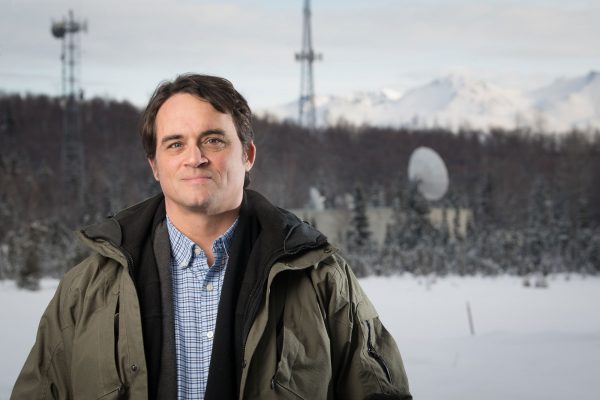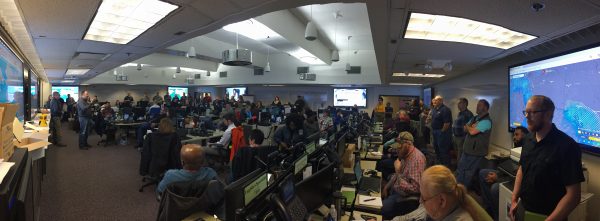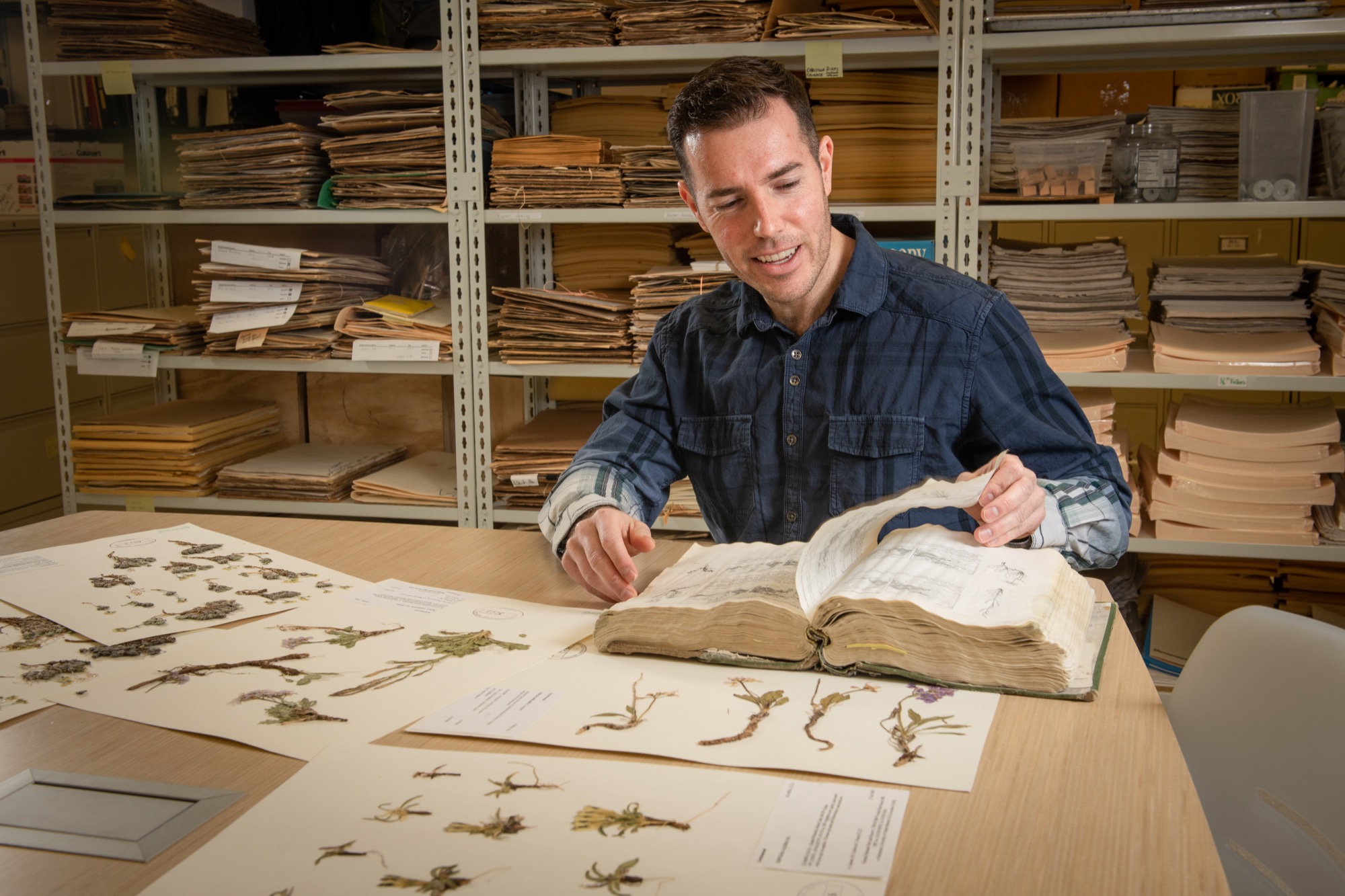Prepare. Respond. Recover.
by Matt Jardin |

Journalism and public communications alumnus Jeremy Zidek, B.A. '02, works as a public information officer for Alaska's Division of Homeland Security and Emergency Management. When disaster strikes, it's his job to communicate crucial information to the community quickly, thoroughly and across all media channels. (Photo by James Evans / University of Alaska Anchorage
Everyone in Anchorage remembers where they were at 8:29 a.m. on Friday, Nov. 30, 2018. Journalism and public communications alumnus Jeremy Zidek was cozy in bed, watching the news and enjoying a well-deserved day off. Then the 7.0 earthquake hit, and his plans to relax that day crumbled. Duty called, but Zidek was more than happy to accept the charges.
"I was born in New York City, but I learned to walk in Alaska," he shares. "If I'm not an Alaskan, I'm not really anything else. So the long hours, working through weekends and holidays, it all comes with a reward because I feel like I'm really serving the people of my state and my town."
Zidek works as a public information officer (PIO) for Alaska's Division of Homeland Security and Emergency Management (DHSEM). When an emergency strikes, it's his job to communicate crucial information to the community quickly, thoroughly and across all media channels.
Basically, Zidek has one of the only legitimate excuses for texting, emailing and checking social media while stuck in traffic, which he had to do during the hour and a half it took for him to drive from the south side of Anchorage to his office on Joint Base Elmendorf-Richardson that fateful morning.
"We are the official source for information," Zidek describes. "It's my job to go out there and talk to people during disasters about what they should do, what emergency protective measures they can take, and to give them information that really paints the picture of what's going on."
According to Zidek, the specifics of his PIO responsibilities shift depending on which one of three modes DHSEM finds itself in.
Most of the time, Zidek is in preparation mode. In this phase, his role involves helping the public understand and prepare for disaster, and conducting emergency training so when the second mode arrives, they aren't caught off guard.
That second mode is the disaster response mode, which, needless to say, was most recently experienced on Nov. 30. The picture Zidek paints of this mode is like a scene from a movie: a room lined with screens that are running the news or displaying topographical maps, filled with officials who are monitoring the situation and dispatching emergency services.
"During disaster events, I'm really outward focused," says Zidek. "It's my job to communicate with the media, law enforcement, emergency responders and city leadership so people have the best overall picture of a disaster event and know of any type of protective measures or actions they should be taking."

The state emergency operations center during the 7.0 earthquake on Nov. 30. (Photo courtesy of Jeremy Zidek)
While DHSEM is still engaged in some disaster response mode activity after the earthquake - mainly in the form of continuing to provide temporary shelter for around 40 people - Zidek has effectively moved into the third and final mode: recovery. Under this phase, his communications revolve more around notifying survivors about the types of disaster recovery programs that are available to them.
By Zidek's own estimation, Anchorage's relatively quick and seamless transition from response to recovery is likely due to the strong infrastructure already in place, which is also a testament to how valuable the work done during preparedness mode can be.
Whereas other communities experiencing catastrophic events struggle while waiting for federal aid, Alaska's own assistance programs proved a sufficient holdover by the time a federal declaration was approved two months later on Jan. 29, 2019.
"As Alaskans, we have to consider ourselves very fortunate," says Zidek. "We didn't see a tsunami wave or any widespread damage. There's a bit of luck, but also a lot of preparation. Anchorage had the proper building codes in place to make sure the buildings were earthquake resilient, and that made an enormous difference."
Zidek takes the notion of resilience and preparedness one step further, attributing those qualities not just to Anchorage's buildings, but to the people who occupy them.
"All disasters are local," he explains. "The most basic level of local is your family. When we have people come together as a family and prepare for some type of disaster, we have a resilient community. We see that when communities are prepared and people on the individual family level are prepared, it makes the entire disaster response effort so much easier, so much smoother, and people recover better. When individuals are prepared, they can turn around and help their community, and that neighbor-helping-neighbor is really something that is beneficial. Community disaster response first has to happen at that local level."
Written by Matt Jardin, UAA Office of University Advancement
 "Prepare. Respond. Recover." is licensed under a Creative Commons Attribution-NonCommercial 4.0 International License.
"Prepare. Respond. Recover." is licensed under a Creative Commons Attribution-NonCommercial 4.0 International License.














